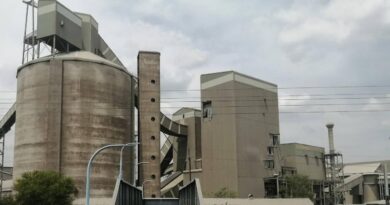Indonesia’s long road to green energy
Indonesia, the biggest economy in Southeast Asia, is predicted to see its demand for electricity double in the next ten years. In an attempt to accelerate its economic development, the country is likely to remain dependent on cheap and plentiful coal to meet its soaring electricity demand, which will further accelerate the warming of the planet.
Indonesia relies mainly on fossil fuels for its energy supply, with coal accounting for almost one-third of its energy sources, and oil and natural gas accounting for 42% and 16% respectively. The use of coal has steadily risen since the turn of the century and is predicted to rise further in an effort to boost the country’s economy.
Last year, Indonesia saw ten coal-fired power plants begin operations with a total capacity of 3 GW, making up almost three-fourths of the new power generation in 2019. Among the newly-launched plants is the largest coal-fired power unit, called Java 7 Unit 1, which has a capacity of 1 GW.
These new coal plants, critics pointed out, offset the nation’s renewable energy growth efforts. The capacity of the Java 7 Unit 1 alone is nearly three times greater than the 376 MW worth of green energy plants launched last year. Java 7’s second unit, also with a capacity of 1 GW, is set to come online next year.
Climate change is of particular significance to Indonesia: its massive coastal population is particularly at risk to sea level rise and the livelihoods of many people depend on agriculture and fishing, which is impacted by temperature changes and water availability.
The Indonesian government has acknowledged the urgent need to cut its coal dependence. However, the country- the world’s 4th largest coal producer after Kazakhstan, South Africa and Russia- is still struggling to do so, mostly because coal is a reliable means to boost the economy.
In order to achieve its green energy commitments under the Paris Agreement, Indonesia needs to end its coal addiction, ending the construction of coal plants and phasing out coal power by this year.
Coal will become more expensive as the price of renewable resources falls. Building new renewables, like solar photovoltaic panels, is projected to be less costly compared to operating existing coal plants.
There’s also a substantial risk of those existing coal plants becoming stranded assets (prematurely retired coal plants due to their high operating costs). Under a scenario in which coal power will be phased out in a manner consistent with the goals of the Paris Agreement, Indonesia is at risk of losing $35 billion in the next decades from these stranded assets.
To avoid these risks, Indonesia should accelerate its energy transition to renewables, exploring and developing alternative fuels, like geothermal and solar power. Unfortunately, renewable energy has yet to show a significant uptake: last year, the country had 12.36% renewable energy in its electricity production mix, far below its 17.5% target. The country voluntarily set itself the target of achieving 23% renewable energy use by 2025, and 31% by 2050.
However, there are signs of hope. At least 35 renewable energy projects with a capacity of 834.71 MW are entering construction with a commercial operation target of between 2019 and 2021. Indonesia is also planning to replace old coal plants with renewable energy and introduce a regulation on renewable energy to attract foreign investors. Those moves can increase the share of renewables in its power mix.
Indonesia needs to work to stick to its emissions reduction targets while continuing to develop its economy. If the mission is successful, Indonesia can set an example for other developing countries that it is possible to decouple economic growth from greenhouse gas emissions.
xxxx



